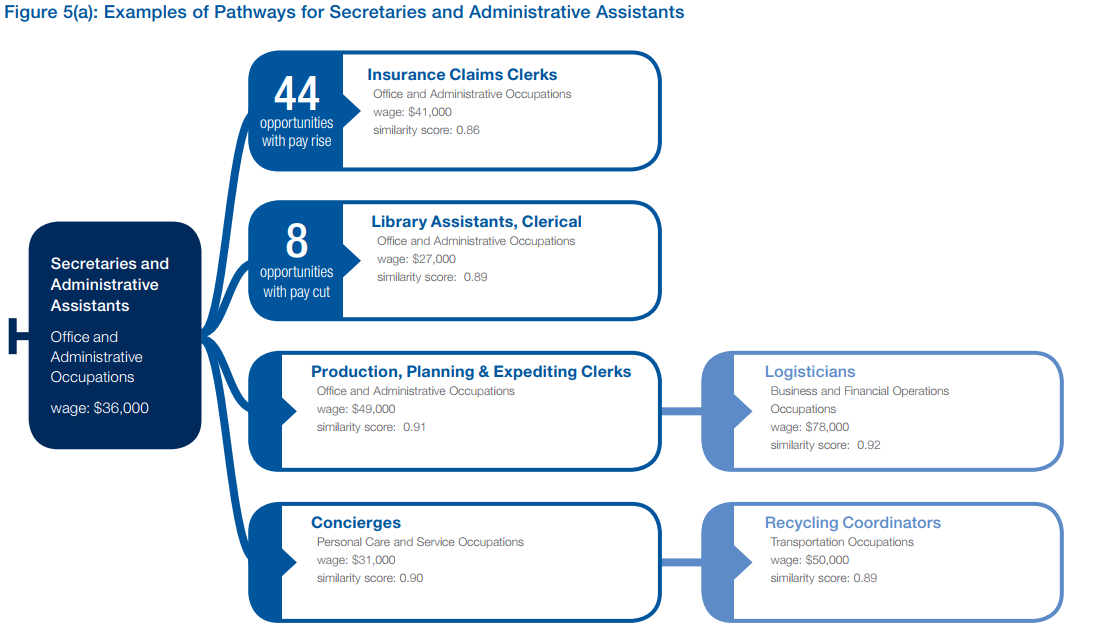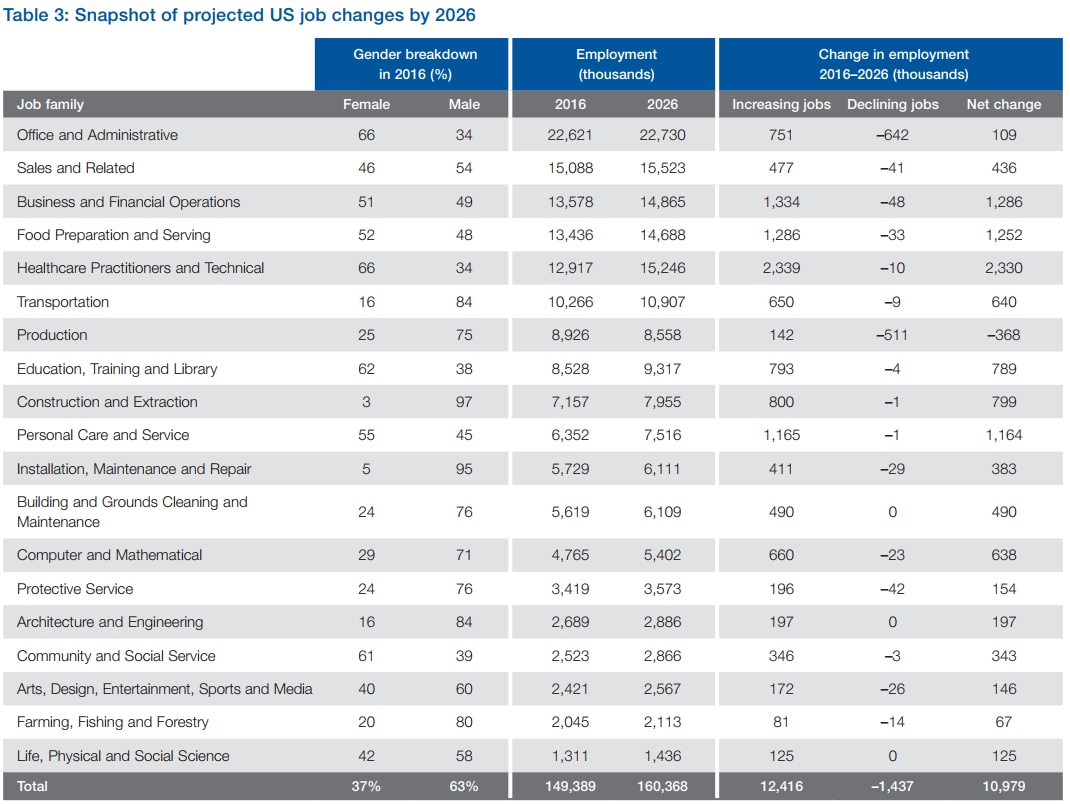Which of tomorrow’s jobs are you most qualified for?

If your job is at risk of automation, these charts could help you decide what to do next Image: REUTERS/Toru Hanai

Get involved with our crowdsourced digital platform to deliver impact at scale
Stay up to date:
Future of Work
The global labour market will experience rapid change over the next decade. The reason: more jobs becoming automated as technologies such as artificial intelligence and robotics take over the workplace.
Workers will have to adapt quickly, rushing to acquire a broad new set of skills that will help them survive a fast-changing job market, such as problem-solving, critical thinking and creativity, as well as developing a habit of lifelong learning.
To help prepare the future workforce, a new report by the World Economic Forum and Boston Consulting Group analysed 50 million online job postings from the United States.
Based on a person’s current job, skill-set, education and ability to learn, the researchers set out paths from jobs that exist today to new jobs expected to exist in the future. These target jobs are then assessed on how similar they are to an existing job, and on the number of job opportunities they're likely to offer in the future.

Finding future job matches
To assess the compatibility of different jobs, the report uses "similarity scores", which show the overlap between education, experience, training, skills and knowledge as a numeric value between 0 and 1.
High similarity scores are described in the report as 0.9 or higher, while low similarity jobs are those below 0.85. So computer programmers, for example, are deemed a good fit for jobs in web development (0.92), but not in anthropology (0.82).

Where are the job opportunities?
According to an analysis of most job types, assembly-line workers – who are among those considered most at risk of losing their jobs to automation – have 140,000 transition opportunities in total – the most of any group of workers.

Those with the least opportunities – around 5,000 – include tool-makers and processing-machine operators, according to the report.
Women’s jobs are likely to be disproportionately affected by automation, at least in the short term. Of the 1.4 million US jobs that are projected to become disrupted between now and 2026, over half (57%) are done by women, an issue also reflected in the World Economic Forum’s Global Gender Gap Report 2017.
While certain jobs are projected to decline across most of the sectors analysed in the report, there is expected to be a net increase in jobs by 2026 in every industry except production, where over 360,000 jobs are forecast to disappear.

In the education, training and library category, for example, around 790,000 jobs are expected to be created by 2026, while in healthcare there will be as many as 2.3 million. Overall, the report predicts around 11 million jobs will be created in the US alone in the coming years.
To coincide with the report, the Forum published a complementary study – Eight Futures of Work: Scenarios and Their Implications – that imagines various scenarios for what the future of work might look like by the year 2030, and what the key implications are for actions today.
Unsurprisingly, the need to anticipate changes in the labour market and prepare to reskill workers, as well as help them transition into new jobs, all emerge as chief priorities.
Don't miss any update on this topic
Create a free account and access your personalized content collection with our latest publications and analyses.
License and Republishing
World Economic Forum articles may be republished in accordance with the Creative Commons Attribution-NonCommercial-NoDerivatives 4.0 International Public License, and in accordance with our Terms of Use.
The views expressed in this article are those of the author alone and not the World Economic Forum.
The Agenda Weekly
A weekly update of the most important issues driving the global agenda
You can unsubscribe at any time using the link in our emails. For more details, review our privacy policy.
More on Jobs and the Future of WorkSee all
Eli Joseph
April 19, 2024
Kate Whiting
April 17, 2024
Juliana Guaqueta Ospina
April 11, 2024
Victoria Masterson
April 9, 2024
Jacqueline Brassey, Lars Hartenstein, Patrick Simon and Barbara Jeffery
April 3, 2024







